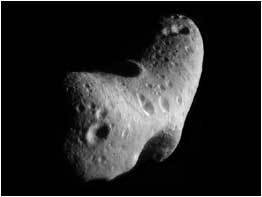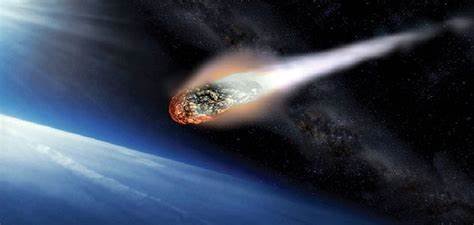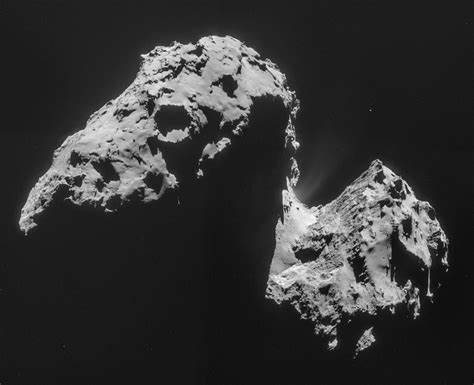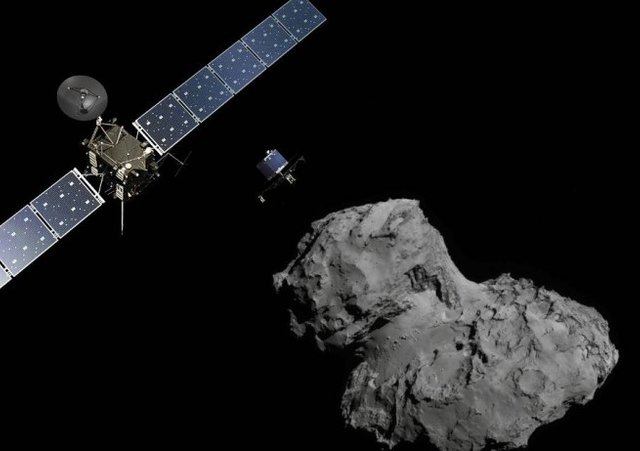The mystery of asteroids and comets.. Landing on the surfaces of the young solar system

"If it weren't for the curiosity of the human element technician”. That was a saying of one of the scientists when he described the human being's incessant exploration of more worlds around him, both on the earth that he inhabits, and in the surrounding spheres of the solar system to which he belongs, and to other suns and stars that he dreams of someday reaching.
In keeping with its habit of providing everything that is interesting and useful, Al Jazeera broadcast the episodes of the scientific series “Secrets of the solar system”, where it swims us in this vast space, and records for us in Word and image the efforts of scientists and researchers in probing the depths of this endless universe, and opens in this episode the archive of “asteroids and comets”.
"Eros”.. The probe's journey to the two hugging planets
In 1996, the probe “Ner-Shoemaker” was designed to go to one of the asteroids and stop near it for a long time, in order to identify and study it. Like all missions, he took a long time to reach his goal, reaching the asteroid “Eros” (Eros) in December 1998.
As soon as the probe reached the asteroid's orbit, it sent back images the likes of which it had never seen before. The images were blurry at first, then they became clearer little by little, and at each stage new things appear, they are amazing images, as if they are two planets embracing each other, enclosing beautiful depressions and smooth curves that converge at that. The mission lasted until February 2001, the probe was nearing the end of its life and could not return to Earth.

The mission manager asked his team members to determine what it takes to land the craft on the asteroid's surface without damage, but it was not originally prepared for landing, however, it landed successfully, and this was the first landing of a human craft on a small object, paving the way for subsequent missions.
The next goal was to return a piece of the asteroid to Earth, just like when man landed on the moon, bringing pieces of planets and studying them on Earth is tantamount to studying the effects of the solar system and its ancient history.
Itakawa.. Planetary samples bearing the characteristics of ocean waters
“Hayabusa-1”, the ambassador of the Japanese space agency “JAXA”, launched into space in 2003, and the goal was to reach one of the asteroids and return a piece of it to earth, and it was an ambitious mission that was marred by bad luck from the beginning, as a large solar flare appeared and collided with the optical panel of the vehicle, weakening its propulsive energy to the orbit of the asteroid.
The arrival of “Hayabusa-1” to the asteroid “itakawa” took two years, and then the pictures began to arrive. It's a really amazing world, the goal of “Hayabusa-1 " was to collect pieces of the planet, and in November 2005 it slowly landed and sent a funnel adjacent to the surface, firing an internal projectile that excites the crust, collecting samples from it for later study.

It was supposed to be done in seconds, but it lasted 40 minutes, and it seemed to them that the projectile did not take off, and therefore did not take any samples, the craft was damaged by heat, and the ground team lost control of it.
After a while, the team regained control of “Hayabusa-1” via one of its antennas, and after multiple difficulties, they were able to return it to earth, and they were surprised to discover that the vehicle had collected 1,500 molecules from asteroid samples. The rover returned in 2009 and has carried a lot of contributions to human science.
Were it asteroids that brought water to Earth Tests were carried out to measure the hydrophilic properties of the sample, and it was found to be absolutely identical to ocean water. This may be the first evidence of the relationship of asteroids to the oceans.
"Giotto".. Fulfillment of dreams of meeting with the famous comet " Halley”
Unlike asteroids, comets are located closer to the sun, we can study them more easily than asteroids, and these objects have long fascinated man since time immemorial, he wondered about the treasures and secrets that these comets hide. These secrets remained hidden until it was possible to track and study the Comet “Halley”, which orbits the solar system and approaches the Earth every 76 years.
The American “Giotto” was designed to intercept Halley's comet as it approached the Earth in 1986, and launched in 1985 on an eight-month Flight. The images showed the comet's halo, called The "Wolf", containing dust, and there was a fear that the impact of dust particles on the vehicle traveling at a tremendous speed could cause damage to it, it is a suicide mission, so to speak.

Giotto set off towards Halley's nucleus slowly, and it began to collide with accelerated particles, and the impact cases increased and became more intense just before reaching the comet, and in the meantime the craft suffered a big shock that made it rotate around itself, and suddenly the shield no longer protected it from dust particles, the ground team no longer took pictures, and everyone thought that the craft had crashed, and that the mission had failed.
But fortunately the craft held up, and it took two minutes until it resumed sending data again, it was beautiful and amazing images, the comet was not a shiny ball as it was thought, but it was not a ball at all, it was a dark mountain and closer to black, and by Giotto it was possible to identify the parts of the comet and the activities of each part, and all this information would not have been available if Giotto had not reached the comet.
"Rosetta".. An ambitious space adventure to touch the comet
The “Giotto” spacecraft was able to reveal many secrets about Halley's comet, but there would be more information if scientists could touch the comet or land on its surface, and the implementation of all these dreams in one step would be amazing, and here “Rosetta” came in 2004 to be an ambitious space adventure.
Because the amount of energy in the comet's orbit is different from that in the Earth's orbit, scientists used this difference to accelerate the craft and put it on the right orbit. At the moment, “Rosetta” moved too far away from the sun and its optical panels lost a lot of energy, the decision was made from Earth to turn off the operating systems, scientists spent two and a half years without communication with the vehicle, a deadline was set for reconnecting with the vehicle on the twentieth of January 2014, and scientists, researchers and flight managers nailed down their places in the control room to receive the new signal.

It was one of the most tense and emotional moments, then her call arrived in the form of a sound click, it was a landmark moment for the entire ten-year journey with “Rosetta”, and now it is possible to continue the flight to Comet (67P) (churimov-gerasimenka).
Rosetta is the Latin name for the” Rosetta Stone", which was found in Egypt near the city of Rosetta in 1799, and therefore deciphered the meanings of hieroglyphic symbols.
"Fillet".. Rosetta's "little son" hugs the surface of the comet
The spacecraft “Rosetta” will visit an ambassador from the solar system that is 4.5 billion years old, its dimensions are 4 km, its shape is like a sponge duck, at the bottom of it is an earthen plain, but above are rocks, and if you stand at its neck you will see a one-kilometer Valley, two high rocky cliffs between which there is an Abyssal chasm, and there is a great variety in the topography of the surface of the comet, one may spend a whole lifetime studying its details.
The “filet” spacecraft prepared for landing on the surface of the comet separated smoothly, the landing took 7 hours, and the moments of approaching the surface were the most critical, the auxiliary systems started to work one after another, and the information was arriving successively, until the confirmed news came that the probe “filet” actually landed on the surface, it was moments full of emotions and fervent feelings for all the team on Earth.
